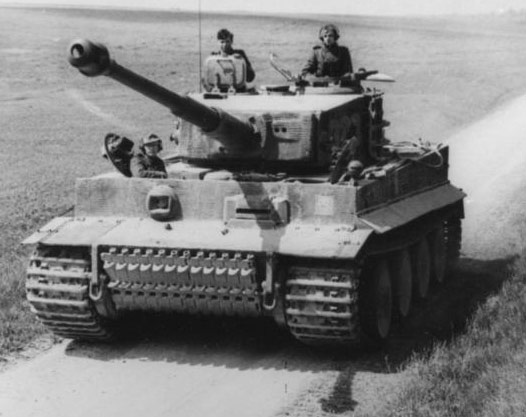Introduction
World War II, spanning from 1939 and 1945, was a period of significant technological advancements in military hardware, with tanks emerging as one of the most influential weapons systems. These armoured vehicles became central to many of the war’s key battles, fundamentally altering the dynamics of land warfare. This article aims to explore the various tanks deployed during the conflict, examining their design, capabilities and the important roles they played. By understanding these machines, we can appreciate how they shaped military tactics and strategies across the world’s battlefields.
The Importance of Tanks in World War II
During World War II, tanks became essential to modern warfare, revolutionising the approach to combat. With their mobility, protection and firepower, they allowed armies to manoeuvre in a variety of terrains, from the deserts of North Africa to the forests of Western Europe. Tanks played a central role in both offensive operations aimed at penetrating enemy lines and defensive missions where holding strategic points was necessary. Their impact on military tactics was profound, influencing the planning and execution of operations such as the D-Day landings and the Blitzkrieg campaigns.
German Tanks
German tanks were at the forefront of the Axis powers’ armoured units, with models like the Panzer IV, Tiger I, and the Panther being the most notable. The Panzer IV was a versatile medium tank that served throughout the entire war. Known for its effective balance of firepower, mobility and armour, the Tiger I was renowned for its almost impenetrable front armour and powerful 88 mm gun, capable of destroying enemies at significant ranges. The Panther, introduced later in the war, was a response to the Soviet T-34 and combined aspects of the Tiger’s armour and armament, with great greater speed and manoeuvrability. These tanks were not just tools of war but symbols of German engineering prowess, though they also suffered from mechanical complexities and production difficulties.
Soviet Tanks
The Soviet Union’s tank forces were effective in resisting the German invasion, ultimately pushing it back to Berlin. The T-34, a medium tank, was particularly significant due to its innovative design, which included sloped armour for enhanced ballistic protection, wide tracks for better mobility and difficult terrain and a powerful 76.2 mm gun. The KV series of heavy tanks complemented the T-34, providing even thicker armour and larger guns. These tanks were vital in the brutal clashes on the Eastern Front, influencing key victories in battles such as Kursk, one of the largest tank battles in history.
Allied Tanks
Allied tank development was characterised by a diversity of designs, with the American M4 Sherman and the British Churchill among the most prominent. The M4 Sherman was known for its mechanical reliability, easier production and adaptability, which made it widely used by Allied forces around the world. Despite being outclassed by heavier German tanks in direct engagements, its numerical superiority was a decisive factor in Allied strategy. The British Churchill tank, with its heavy armour and good climbing ability, excelled in specific scenarios like the rough terrain of the Italian campaign and supported numerous infantry assaults throughout the war.
Western Tanks
Beyond the famous tanks of the major powers, numerous lesser-known models found action and played specialised roles during the conflict. The Japanese Type 97 Chi-Ha, although under-armed and under-armoured compared to its Allied counterparts, was the most widely produced Japanese medium tank of the war. In Italy, the Carro Armato M13/40 was a staple of Italian forces in North Africa, though it struggled against the more advanced Allied tanks. Examining these lesser-known tanks helps highlight the varied approaches to tank design and their diverse applications in different combat environments
Evolution of Tank Warfare
World War II drove rapid advancements in tank design and battlefield tactics. Earlier war tanks were generally lighter and less formidable, but as the war progressed, the demands of combat led to heavier, more powerful models equipped with thicker armour and larger guns. The evolution of tank warfare also included the development of specialised roles such as tank destroyers and self-propelled guns. Post-war, these innovations laid the groundwork for modern army tactics and the next generations of tanks, which continue to build on the technological foundations established during World War II.
Conclusion
The role of tanks in World War II cannot be overstated. They were not only vital to many of the war’s major battles but also a driving force for change in military tactics and technology. Their development during the war represented a significant evolution of how battles were fought, with lasting implications for military strategy that extend into modern warfare. By examining the varied rules and performances of these tanks, we can gain a deeper understanding of their enduring legacy and the technological innovations that continued to influence military strategies long after the war’s end.
World War II History
Discover the history of War II at the Eden Camp Modern History Museum, nestled on the outskirts of Malton. The site, initially established as a prisoner of war camp in 1942, hosted hundreds of Italian and German captives. In 1985, Stan Johnson converted these premises into an immersive museum. Now a landmark for its authentic portrayal of wartime Britain, the museum vividly brings history to life, with the original huts equipped to depict various wartime themes from military campaigns to everyday life on the Homefront. Highlights include a new Blitz simulation, a redesigned entrance, and an extensive exhibition hall that displays a unique collection of military vehicles and artefacts. Eden Camp goes beyond traditional museum experiences by offering interactive displays that engage all the senses, making it an educational adventure for all ages. Visitors can expect a welcoming environment with free parking and facilities for pets, perfect for spending three to four hours exploring British history.
To learn more about Eden Camp, or to schedule a visit, contact us via our website or give us a call at (01653) 199450.


